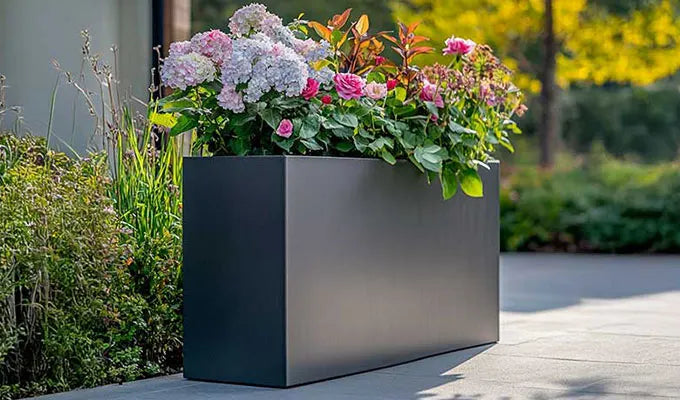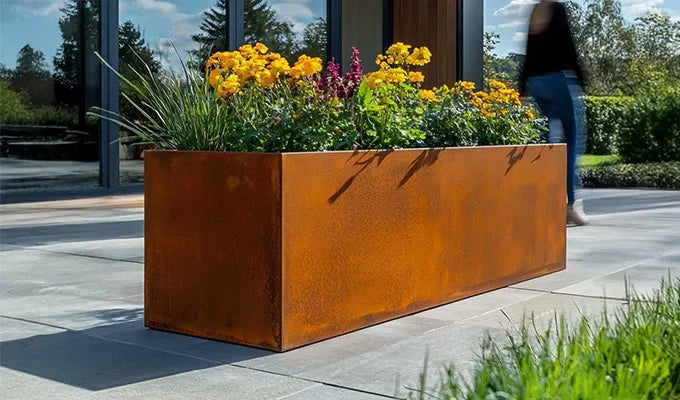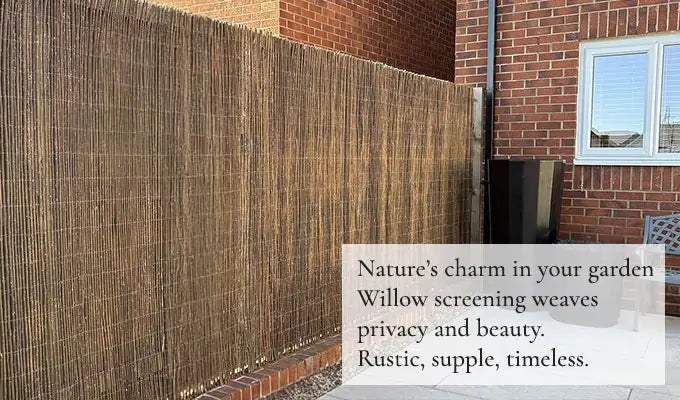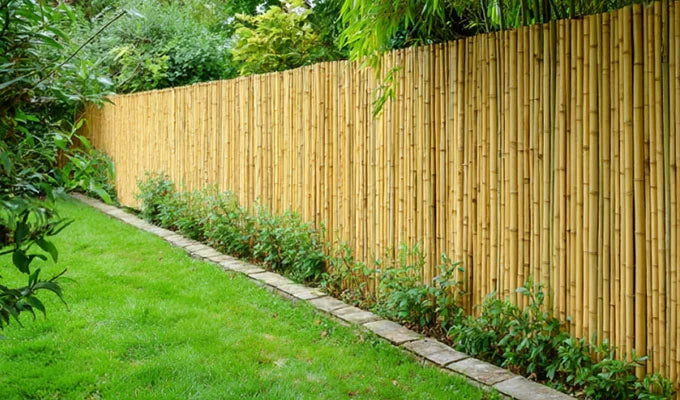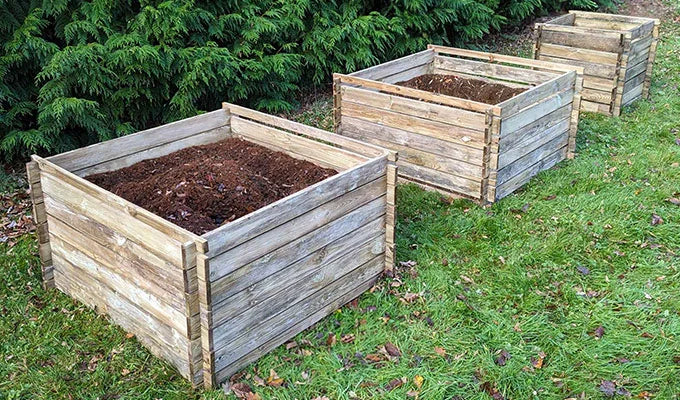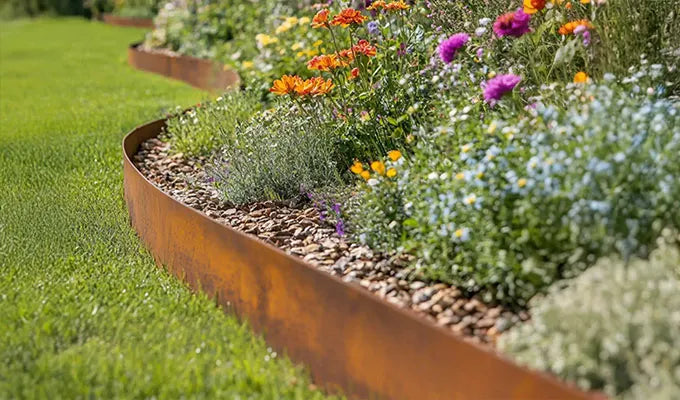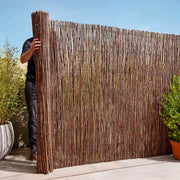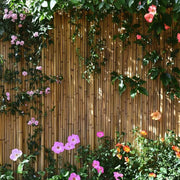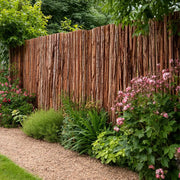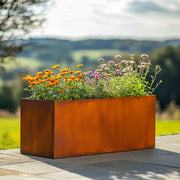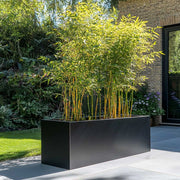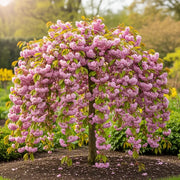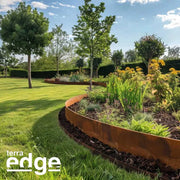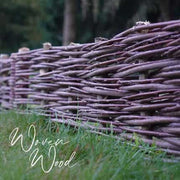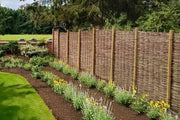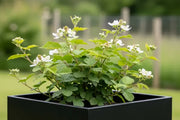Guide To Composting
Step 1 - Choose a Compost Bin There's a wide variety of compost bins available, so you're sure to find one that fits your needs.
Plastic bins are beginner-friendly, often featuring lockable lids to keep pests out, but may lack optimal air circulation and heat distribution. Wooden bins provide better air circulation and heat distribution but may require periodic replacement due to rotting. Compost tumblers accelerate the process and are suitable for those with limited mobility, while wormeries are perfect for small or indoor spaces. Shop all compost bins.
Step 2 - Position Your Compost Bin Place your compost bin in a dry, well-drained area with year-round accessibility.
Locate it on bare soil to enable worms and other beneficial organisms to access the pile. Remove any grass or plants, and turn 6-8 inches of soil beneath the bin. For wormeries, follow the manufacturer's placement instructions.
Step 3 - Learn What Can and Can't Be Composted Composting materials are classified as Green and Brown.
Both types are necessary for successful composting. Green materials include grass clippings, fresh manure, vegetable trimmings, and most green plant cuttings. Brown materials consist of leaves, hay, straw, and paper. Consult our Primrose Composting Guide for a comprehensive list of compostable materials.
Step 4 - Begin Composting Composting is like layering a cake. Moisten each layer with a garden hose or spray bottle. To start:
- Line your bin with a 4-inch layer of twigs, hay, and straw (follow the manufacturer's instructions for smaller bins).
- Add an equal layer of brown material, topped with a thin layer of soil.
- Add an equal layer of green material, topped with a thin layer of soil.
- Continue alternating layers of green and brown materials until the bin is full.
- Aerate your compost with a shovel or fork every 3-4 days.
Step 1 - Choose a Compost Bin There's a wide variety of compost bins available, so you're sure to find one that fits your needs. Plastic bins are beginner-friendly, often featuring lockable lids to keep pests out, but may lack optimal air circulation and heat distribution. Wooden bins provide better air circulation and heat distribution but may require periodic replacement due to rotting. Compost tumblers accelerate the process and are suitable for those with limited mobility, while wormeries are perfect for small or indoor spaces. Shop all compost bins.
Step 2 - Position Your Compost Bin Place your compost bin in a dry, well-drained area with year-round accessibility. Locate it on bare soil to enable worms and other beneficial organisms to access the pile. Remove any grass or plants, and turn 6-8 inches of soil beneath the bin. For wormeries, follow the manufacturer's placement instructions.
Step 3 - Learn What Can and Can't Be Composted Composting materials are classified as Green and Brown. Both types are necessary for successful composting. Green materials include grass clippings, fresh manure, vegetable trimmings, and most green plant cuttings. Brown materials consist of leaves, hay, straw, and paper. Consult our Primrose Composting Guide for a comprehensive list of compostable materials.
Step 4 - Begin Composting Composting is like layering a cake. Moisten each layer with a garden hose or spray bottle. To start:
- Line your bin with a 4-inch layer of twigs, hay, and straw (follow the manufacturer's instructions for smaller bins).
- Add an equal layer of brown material, topped with a thin layer of soil.
- Add an equal layer of green material, topped with a thin layer of soil.
- Continue alternating layers of green and brown materials until the bin is full.
- Aerate your compost with a shovel or fork every 3-4 days.
Step 5 - Use Your Compost Your compost is ready when it's dark, crumbly, and has an earthy smell. The process usually takes 3-6 months, but longer is better. Use your compost as needed to give your plants and homegrown produce a nutrient boost.
Browse our selection of composting essentials to kickstart your composting journey today.
The process usually takes 3-6 months, but longer is better. Use your compost as needed to give your plants and homegrown produce a nutrient boost.
Browse our selection of composting essentials to kickstart your composting journey today.

